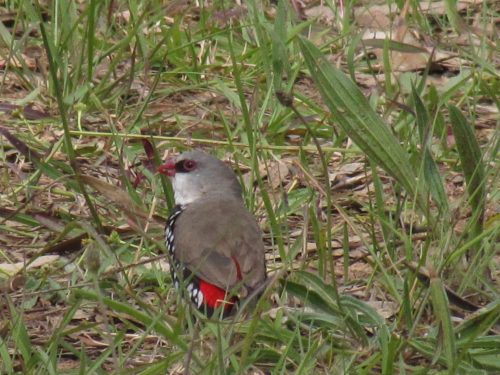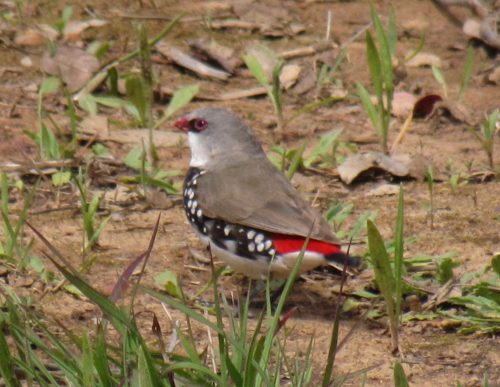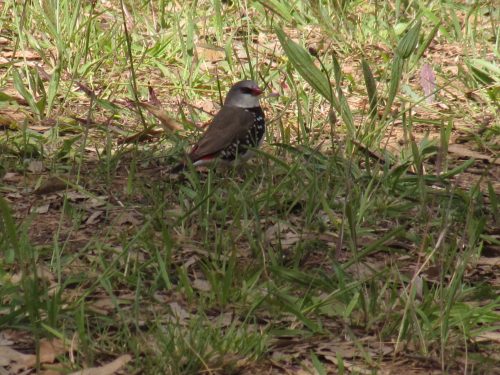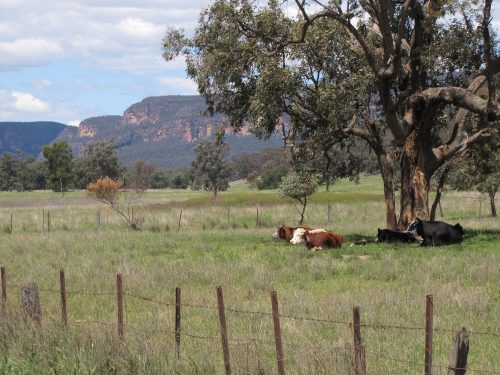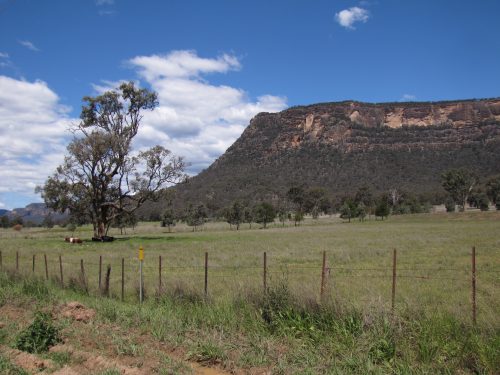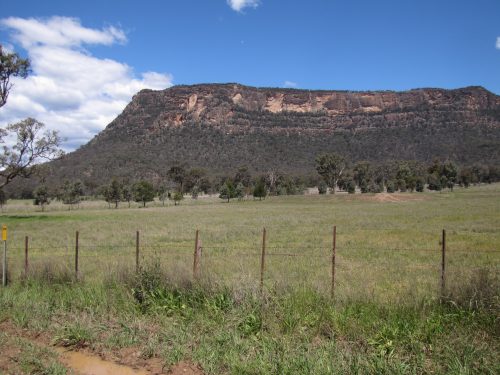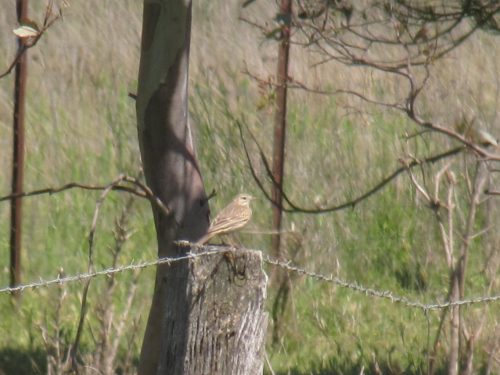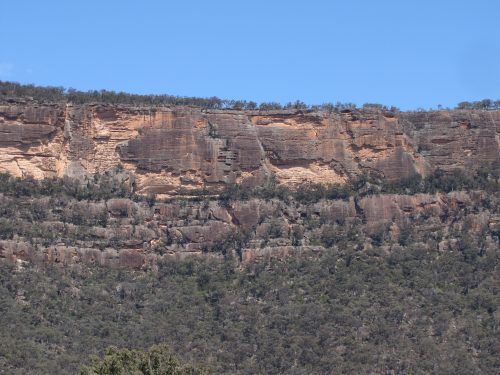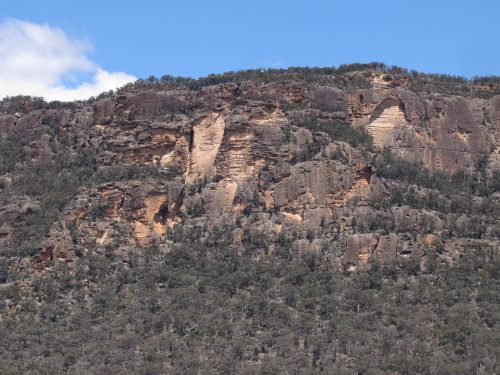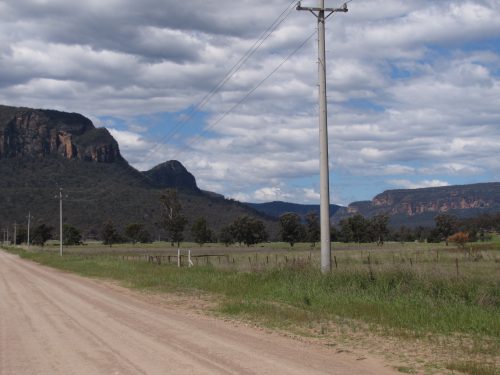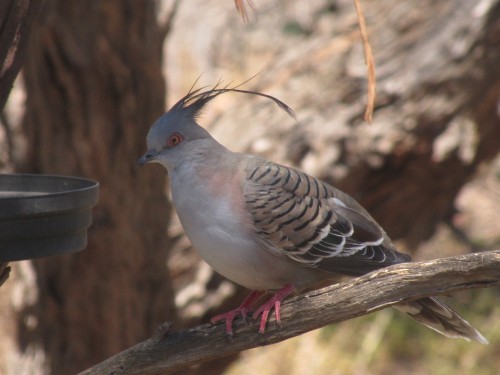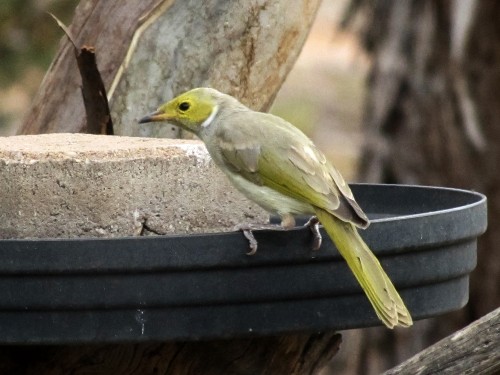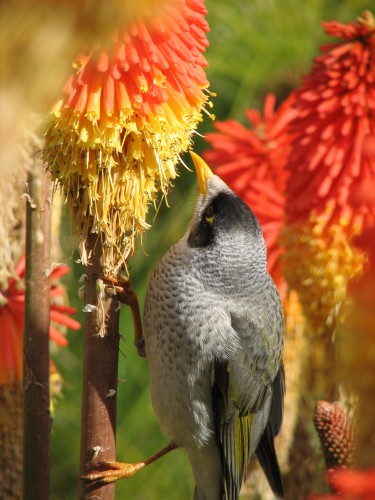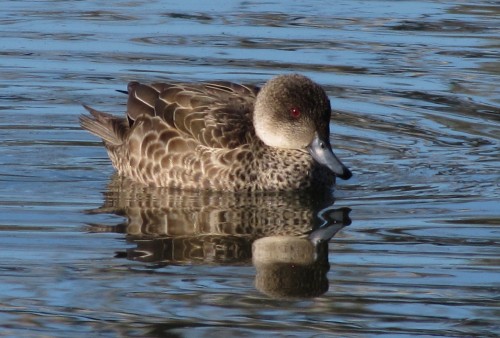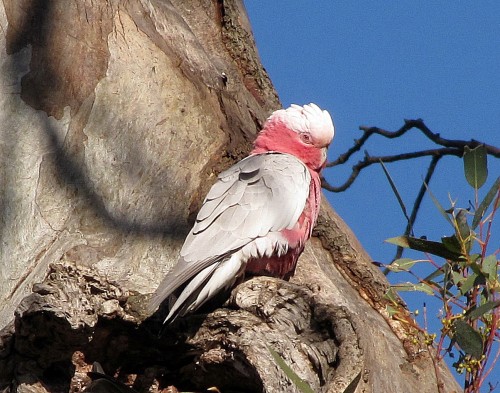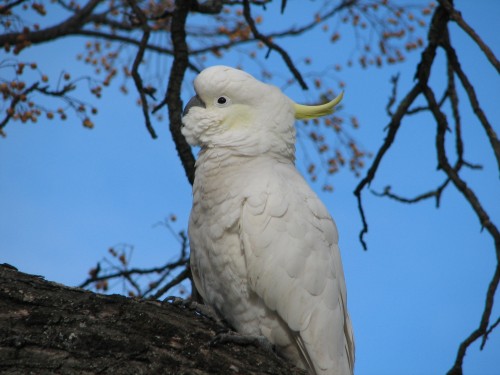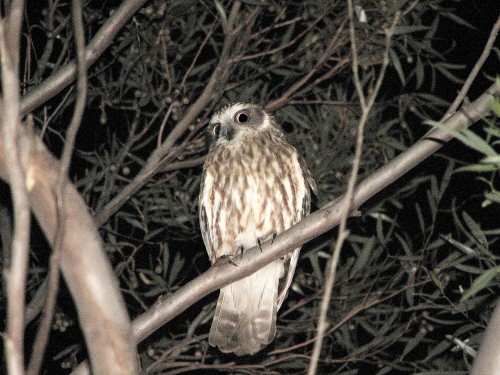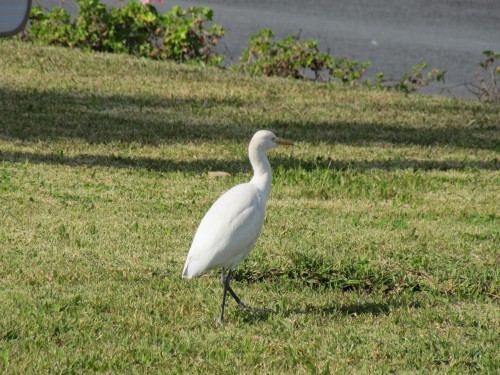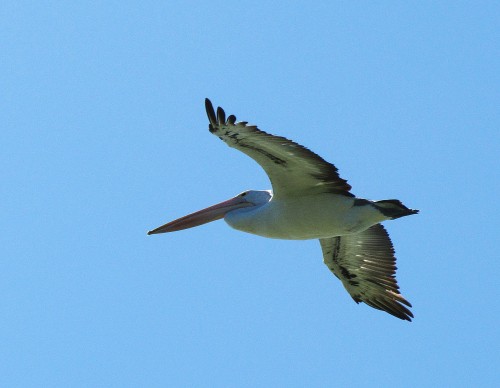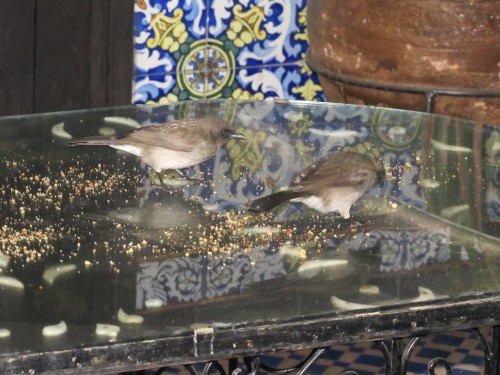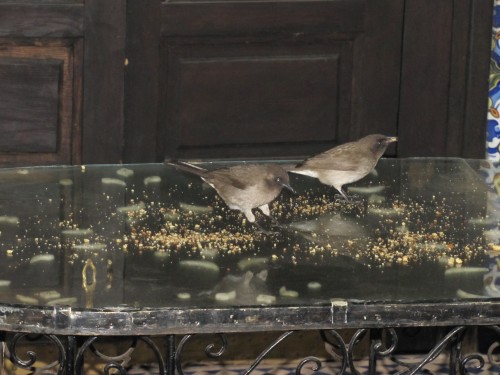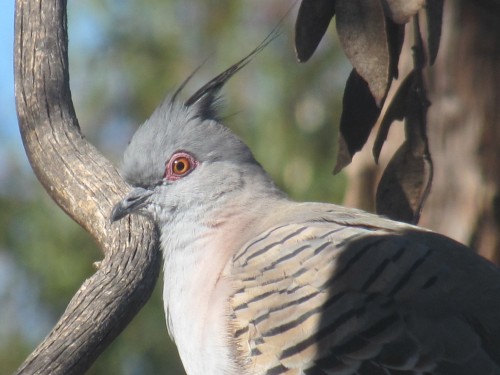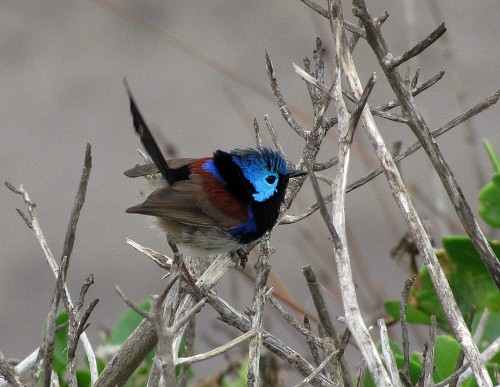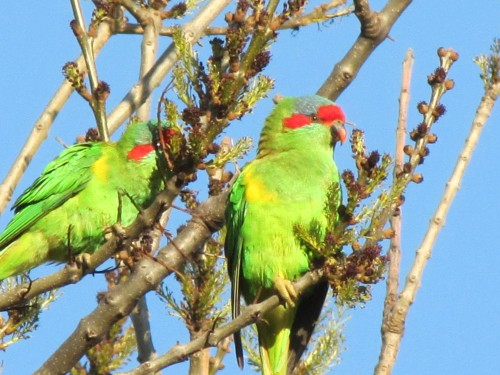Glen Alice in Capertee Valley
Earlier this week I wrote about my first visit to the Capertee Valley late last year. In general, this was a rather disappointing day of birding. I went with such high expectations, but I didn’t realise that I had underestimated the time needed to do this wonderful region justice. The road through the valley is an alternative route from Lithgow (north-west of Sydney) to Mudgee, though some of this section of the road is unsealed.
One really needs a full day to explore this area even superficially. Several days to a week would enable keen birders to really enjoy the delights of this valley. In this way, keen birders would be able to track down many of the wonderful birds of the valley. Along the route I took we noticed at least twenty signs pointing to Birdwatching Sites. Each would be worth stopping at for an hour or two. We only stopped at one, and that was in the small village of Glen Alice. This small settlement has a school, a community hall, an emergency fire station, an old church and several houses. Oh, I forgot – it also has a historic cemetery.
We went for a short drive along the only street before returning to the parking area near the old church. Here we stopped for afternoon tea. While we had our cuppa and some biscuits, I managed to do a little birding. Within seconds of getting out of the car, a solitary Diamond Firetail finch flew in and settled on the ground only a few metres from me. I was able to get a few quickly taken photos before it flew off again. These are the photos I have featured today.
Within the next half hour, I made quite a nice little list of birds seen but didn’t get any more photos – well, not any that are worth showing here. The following species were either seen or heard:
- Grey Butcherbird 1
- Noisy Miner 8
- Diamond Firetail 1
- Australian Raven 4
- Australian Magpie 4
- Red Rumped Parrot 2
- White-plumed Honeyeater 5
- Willie Wagtail 2
- Sacred Kingfisher 1
- Little Black Cormorant 1
- Hooded Robin 1
- Rainbow Bee-eater 2
- Superb Fairywren 2
- Crimson Rosella 2
- Australian Wood Duck 5
- Magpie Lark 2
- Rufous Whistler 1
- Black-faced Cuckoo-shrike 1
- Fuscous Honeyeater 1
Several kilometres out of town in the locality known as Bogee, I added the following species:
- Grey-crowned Babbler 3
- Yellow-rumped Thornbill 3
Related reading:
My first birding visit to Capertee Valley
After our trip to stay with family in Sydney last year, I decided to take a different route back home to Murray Bridge. On our previous trip we had travelled from Sydney via Katoomba to Dubbo on the first day on the return trip. North of the town of Lithgow we drove through the village of Capertee. I remember stopping there to change drivers. On that occasion, we continued on to Dubbo where we stayed the night. We planned to visit the Western Plains Zoo near Dubbo the following day.
On this trip, however, I planned our homeward trip differently. We planned to stop for the night in Mudgee. This was so we could drive through the popular birding area known as Capertee Valley. I had read a great deal about this valley from other birders, so I was looking forward to a good afternoon of great birding. I ended up being somewhat frustrated and a little disappointed. Because of the distances we travelled that day, I underestimated how much birding time I would actually have. Most of the day was taken up travelling. I should have scheduled several days in this area – at least a whole day, anyway.
Our first stop was just a few kilometres east of Capertee. It was lunchtime, so we stopped at a clearing in the forest on the side of the road.
It was quiet.
Far too quiet. As we sat there eating our picnic lunch, I heard just one bird calling, possibly a treecreeper but I couldn’t be sure which species. I didn’t see a single bird for that whole half hour. Admittedly, around midday is quite often the quietest period for birding here in Australia, especially on hot days. On this occasion, it was pleasantly warm.
As we were having our cup of tea – we always carry a thermos or two of hot water on these trips – a lady pulled up behind our car asking for directions. She, too, was a birder and this was her first venture into this area. Although we knew little of the area, and certainly not how to get to the place she was attempting to visit, we helped her as best we could.
Driving further on along the road travelling east, we eventually came to open country with occasional farmhouses nearby. The vista opened up to spectacular views ahead of us, and to the south. I stopped at one point and took the scenery shots shown above and below. In this area, I saw occasional ravens (probably Australian Ravens), a few Australian Magpies (back-backed sub-species here) and a few Magpie Larks and very little else. At one point I stopped the car, grabbed my camera and zoomed in on a bird quite some distance away. It was sitting on a fence post. I have included the very poor photo below. I think it was an Australasian Pipit.
We continued on until we came to an intersection where we turned left and drove north along towards the small community of Glen Alice. The countryside along this road is wonderfully spectacular, with towering sandstone cliffs bordering the valley. This road has a generally good quality dirt or gravel surface, though there was some evidence that recent heavy rain in the district can cause motorists a few problems.
Also along this road, and the road from Glen Alice to Rylestone, there are waypoints labelled “Bird Watching Site” with numbers ranging up to at least 19. While there is a pamphlet guide available for birders giving the location of these sites, I didn’t track one down. I think that they are available in Capertee. They certainly would be handy. Near the public toilets in the roadside park in Capertee there is a detailed map of the area showing all of the birding sites, along with lists of what can be seen at each point. Update: the pamphlet can be downloaded here as a PDF.
While my first visit to the Capertee Valley was somewhat disappointing, I did have some good sightings while we had afternoon tea at Glen Alice, but I will write about that in a few day’s time. This brief four-hour visit has given me the incentive to revisit this area in the near future, but for a much longer time.
Related reading:
- Birds and animals of the Western Plains Zoo, Dubbo
- Capertee Birder – an amazing collection of articles about the valley as well as sound recordings of some of the birds of the valley.
- Capertee Valley Birdlist and map of birding sites as a PDF file.
- Carol Probets site BM Birding – an excellent resource
Birding is easy
It has a been a long time since I wrote a basic post about birding.
Some years ago I wrote a series of 21 articles called How to be a Birder.
This post is not an update on that series. This is just a heads-up to new readers of this site. I was encouraged to write this in response to an article I recently read here. That article is for American readers. What I have to say is largely for my Australian readers – but the same principles apply nearly worldwide.
Birding is really easy
Birding is quite easy. Just glance out of the window into your garden. Do you see any birds? Perhaps you can see a pigeon or a dove or possibly a sparrow. You’ve just become a birder. One of our common birds here in South Australia is a Crested Pigeon, shown below. (Okay – some of you will know it as a “Top Knot” Pigeon, but strictly speaking, that official name belongs to a bird found in the eastern parts of Australia.)
Binoculars and Bird Baths
I usually keep a cheap pair of binoculars handy where I can get to them quickly. We often spend a good part of the day in our sunroom which overlooks a part of the garden. A large picture window in this room gives us a great view of several bird baths. The binoculars give me a great view of any birds which come for a drink or a bath. Installing a bird bath in your garden, even a small garden, can help to bring the birds closer for you to watch – birds like the honeyeater in the next photo.
Into the garden
A short stroll out into the garden or even down the street can reveal plenty more birds. Keep a watch out for any movement in plants, bushes and up in the branches of any trees growing nearby. Pay special attention to any flowers you see – Australian honeyeaters and parrots love the flowers of both native Australian plants as well as exotic plants. The Noisy Miner shown in the photo below is sure enjoying a feed from a red hot poker flower.
Go for a picnic
Another good way to become a birder and to begin enjoying our birds is to go for a picnic. This could be to a local park, a nearby river, lake or beach or to your nearest botanic gardens. In these places, you are sure to find a good variety of birds, especially if there is a water feature or natural body of water. Becuase such places often have crowds of people, many of the birds will have become quite accustomed to humans and you will be able to get up quite close. Near and in the water you will find ducks, geese, herons, egrets, grebes, coots, moorhens, cormorants and many more that I haven’t listed here.
Although it may be tempting and satisfying, please do not feed the birds. Human food, especially bread, is not suitable for Australian birds. In fact, it can kill them.
Go hiking or camping
Australia has hundreds of National Parks and Reserves in every state. These locations are almost always excellent places to go hiking, having a barbecue or picnic or even camp overnight or for longer. Because these areas are usually natural bushland, the birding can also be wonderful, especially in spring here in Australia when many birds are nesting. Keep on the lookout for birds in the bushes and any vegetation, as well as higher up in the branches of the trees. The photo of a Galah shown below was taken at a wetland area near my home. The wetlands area is actually a sewage installation, beautifully landscaped with many bushes and trees.
Birding while travelling
Warning: keep your eyes on the road and on the traffic all around you!
Yes, I also watch out for the birds I see while travelling. We have relatives and friends in many parts of Australia and visiting them sometimes entails many hours – and sometimes days – of travelling our countryside. As we go along I keep my eyes on the traffic and road conditions, but over many years, I have also become adept at watching out for any birds on the side of the road or flying over the road. Birds of prey like eagles and hawks are common along our country highways, as are ravens, choughs, magpies and currawongs. Sometimes this can be frustrating when it comes to identifying them as we speed by in our car, only getting a brief glimpse of the bird.
From time to time, it is safe to stop and get a closer look at a bird, even getting a photo if I have the camera handy. A few years ago I was driving slowly in an Adelaide street after dropping off my wife at a hospital. I was able to stop safely and quickly and get the photo of a Sulphur-crested Cockatoo which I have shown below. There was a small flock of these lovely birds right there in a suburban street tree.
Birding at night
For some people, this might be a little difficult, depending on the environment surrounding their home. It possibly wouldn’t work if you live in a high-rise apartment in the heart of a city. On the other hand, we live on the edge of a large country town with plenty of natural and planted scrub all around. We quite often switch off the television at night; there’s often nothing worth watching anyway.
The area around our home is often very quiet with very little traffic. On these occasions, we occasionally hear nocturnal birds such as owls, frogmouths or nightjars calling. The Southern Boobook Owl shown below was photographed in our garden some years ago.
Birding while commuting
One way of usefully using the time spent commuting is to do some casual birding from the bus, tram or train. I haven’t done this much in my life because I always drove a car to work. To illustrate my point, we recently did a bus tour of Morocco. Wonderful country. Along the way I was able to see quite a few birds while travelling along, even getting the occasional photo, such as the egret shown below, taken from the bus. On the other hand, travelling at 300 kph in the high-speed trains in Spain is just a little too fast to be watching out for any birds. Exhilarating, yes, but difficult.
More unusual birding places
In Bed: I like lingering in bed some mornings, trying to identify the bird calls outside without actually seeing them. This is particularly enjoyable when out bush camping, or in our caravan.
In church: I must confess that I have taken notice of birds while sitting in church. Our church has several windows which give me a good, but limited, view outside. Not getting distracted from the sermon can be a challenge.
At a funeral: Again, I confess to sometimes being distracted by birds at a funeral, especially during the committal if this is held outdoors. I refrain from taking my camera or binoculars on such occasions. The same applies to when I am in church.
In a plane: It is possible to see some high flying birds from planes, but I am talking about birds seen on the tarmac while waiting for the plane to leave, or while taxiing on the runway. I managed to see birds from the window of a plane in Adelaide, Kuala Lumpur, Dubai and Addis Ababa. Now if you add birds seen from the terminal while waiting for a flight, the list gets longer.
On a canoe, boat or ship: I have watched birds from my canoe on many occasions. I have also taken many photos from a friend’s boat on a nearby lake (see the pelican below). I even did some birding while travelling on a ship (ferry) from Morocco to Spain.
In hospital: Thankfully, I have only been in hospital on a handful of occasions. I have, however, visited people in hospital. Whenever there is a suitable window with a garden outside, there is always the potential to even be a birder while recuperating in bed.
How about you?
- Over to my readers; where do you like to go birding?
- What unusual places have you been birding?
- Leave a comment or two; I would really appreciate that.
Good birding,
Trevor
Postscript: In a restaurant: we stayed in a beautiful riad in Marrakech, Morocco. Because it was open to the sky, the birds were free to fly into the restaurant area. The owners even put out seed to attract them. See the photos below.
Revised Birds SA website
I am a long term member of the South Australian Ornithological Association (SAOA), now better known as Birds SA. In fact, somewhere I have a certificate acknowledging 30 years of membership – or was it 35 years? I think it must have been the latter. Whatever.
Sadly, these days my back and various arthritic joints means I don’t get to go on any of their weekly excursions. I sadly don’t get to many of their monthly meetings either these days. It’s always an effort to drive for an hour to get there, and even harder to come home when I am tired.
Being a member I still get their interesting publications, a monthly newsletter and a journal which comes out about two or three times a year. They are always very interesting reading.
The association has had a web presence for some years know, but the website has recently been given a great overhaul. If you live in South Australia, or if you are a visitor to our lovely state, it is worth while having a look at the wealth of information contained on the site. It includes lists of places to visit in SA, along with lists of birds recorded at each place. It includes plenty of great photos as well.
Highly recommended.
Link: People with birds in South Australia
Good birding,
Trevor
Happy 10th Birthday to Trevor’s Birding
Happy Birthday to Trevor’s Birding.
10 years old today.
Goodness, how the years have flown since my very first post on this site. That was actually on a different platform and has been updated several times over the years.
A few statistics
- A total of 1668 articles about birds and birding
- Well over 5300 comments from my readers
- Several thousand photos shown
- Visitors from over 200 countries and territories
- Over a million pageviews from well over half a million visitors
Travels
Wherever I travel I take my camera, binoculars, notebook and field guide and fit in times of birding (bird watching) and bird photography whenever I can. On many occasions I also go out and about near my home for the deliberate purpose of birding. On my return home I then enjoy writing on this site about the birds I have seen and sharing the best of my photos. Some of these travels take me to other states in Australia as well, especially when we visit family in Sydney, and friends in other places.
Archives
Some of my readers may not be aware of the many hundreds of articles in my archives – 1668 articles to be precise – and growing every few days with new articles. These can be accessed via the button at the top of each page and range from the most recent to the very first article. Here is a treasure trove of writing about birds.
Contents
Another way of accessing articles on specific areas of interest is via the Contents on the side bar, including
- How to be a birder
- Glossary of Bird Words – to help my readers understand any jargon used here (and it needs some editing – as well as be completed)
- Favourite Birding Spots – some of my favourite places to go birding (and it needs some serious updating!)
- Great birding moments – those special times when I saw a special bird, or got a lovely photo
Categories and search
Another way of searching for specific information on this site it to use the search facility (in the top right hand corner of each page). Just type in what you are looking for – you might be surprised what comes up. The categories section on the sidebar is another area where you can search for articles on a particular species or topic. If all that doesn’t work, try the contact form – also at the top of each page. Send your questions to me via email and I will reply as soon as I can, noting that there will be a delay if I am busy out birding and away from my computer.
Comments
Every article has a comments section and I would love to have many more. The 5300 comments so far are just the beginning. Just remember that they are moderated, and I reserve the right not to accept, or delete, or even edit comments, so keep them civil and in good taste. Children often read the articles here.
Photos
Over the years I have shared many photos here, with many more to come. Today, however, I decided to share a few of my favourite ones (see below).
Enjoy.
And keep coming back for more.
Good birding.
Trevor
Further reading:
- My first blog post
- Archives – you can access the complete list of articles on this site here or via the button at the top.
